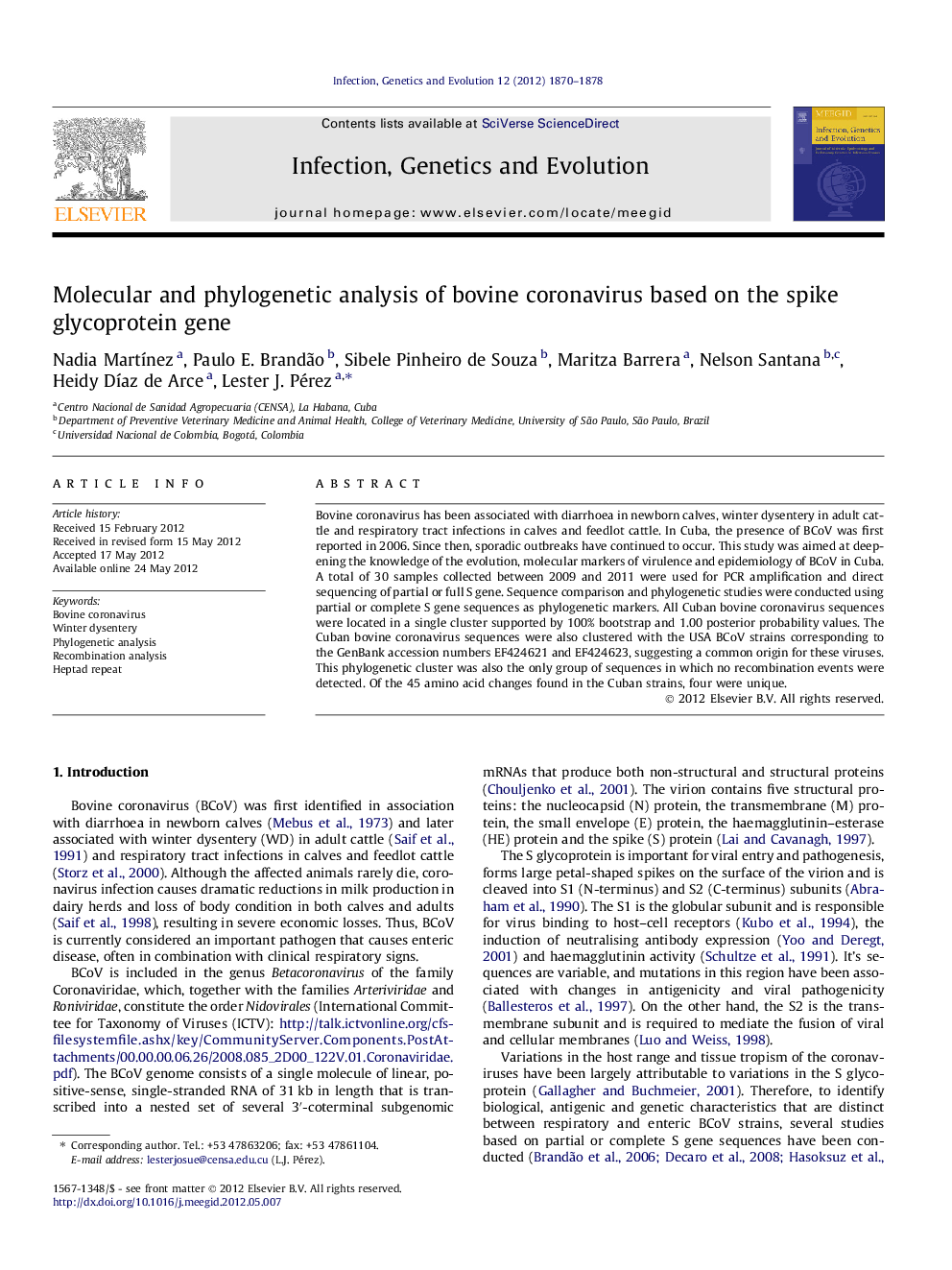| Article ID | Journal | Published Year | Pages | File Type |
|---|---|---|---|---|
| 5911325 | Infection, Genetics and Evolution | 2012 | 9 Pages |
Bovine coronavirus has been associated with diarrhoea in newborn calves, winter dysentery in adult cattle and respiratory tract infections in calves and feedlot cattle. In Cuba, the presence of BCoV was first reported in 2006. Since then, sporadic outbreaks have continued to occur. This study was aimed at deepening the knowledge of the evolution, molecular markers of virulence and epidemiology of BCoV in Cuba. A total of 30 samples collected between 2009 and 2011 were used for PCR amplification and direct sequencing of partial or full S gene. Sequence comparison and phylogenetic studies were conducted using partial or complete S gene sequences as phylogenetic markers. All Cuban bovine coronavirus sequences were located in a single cluster supported by 100% bootstrap and 1.00 posterior probability values. The Cuban bovine coronavirus sequences were also clustered with the USA BCoV strains corresponding to the GenBank accession numbers EF424621 and EF424623, suggesting a common origin for these viruses. This phylogenetic cluster was also the only group of sequences in which no recombination events were detected. Of the 45 amino acid changes found in the Cuban strains, four were unique.
⺠A molecular analysis and phylogenetic studies of Cuban BCoV field sequences were conducted. ⺠From the 45 amino acid changes found on the Cuban strains four were unique. ⺠All Cuban bovine coronavirus sequences were located in a same cluster. ⺠This cluster was the only group of sequences with no recombination event.
